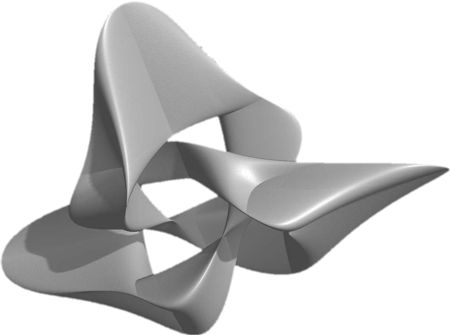Progressive Recognition
Learning is iterative.
Progressive recognition is a concept in learning theory that emphasizes the gradual and systematic acknowledgment of knowledge acquisition and skill development. It aligns with the broader ideas of constructivist and experiential learning, advocating for adaptive and incremental assessment methods.
The majority of this article focuses on Progressive Recognition in Learning Theory as it relates to education and computer science, however, let’s take a brief moment to connect this concept to real life. Progressive recognition is how we learn as children. Anything that we claim to know well was learned via progressive recognition and repeated exposure. The actions we perform autonomously or what we call ‘from muscle memory‘ were developed from progressive recognition and repeated exposure.
If you sew well, you didn’t just read about it once and then go out to create an elegant prom dress. Sewing skill is an iterative process. To sew well, you must sew. A growth process where you kept seeing and doing. Adding, refining and perfecting your knowledge of sewing.
This is why experience ranks so high as a requirement for many well paying jobs. Someone with repeated real world exposure to a skill is more suited to perform the relevant tasks than the one who only saw it in class a few times.
Unfortunately, progressive recognition can also have negative effects. Especially, when coupled with frequency illusion (Baader-Meinhof phenomenon).
In some situations, we can use progressive recognition in the learning and support of our negative biases. For example, if we see a situation where some of ‘those people over there‘ behave poorly, we may begin to notice this unwelcome behavior everywhere. No longer recognizing the situations where ‘those people over there‘ behaved lovingly. This can lead to cynicism or worse misanthropy.
Edification of The Monkey Man is a process of progressive recognition. To edify the Monkey Man, knowledge must be carried to the limbic system. Nothing is just ‘uploaded’ into our limbic system. Everything in the limbic system was learned and it requires an iterative process unlearn and relearn another way.
[Note: acute mental injury or trauma may instantaneously ‘sear’ new information onto the Monkey Man. However, this is not a recommended method for edification]
Foundations of Progressive Recognition in Learning Theory
Progressive recognition is rooted in the idea that learning should be a continuous process where knowledge is built incrementally. This is especially true in mathematical learning. Students cannot simply be expected “memorize and know” something from first encounter. In successful learning environments, mathematical concepts are learned and mastered via progressive recognition and iterative exposure to the concepts. Although some students may need more iterations than others, repeated exposure to mathematical concepts in use is more effective than cram and jam.
Rather than assessing students or learners based solely on isolated examinations, progressive recognition emphasizes ongoing feedback and validation of knowledge at different stages of the learning process. This approach supports deeper understanding, retention, and adaptability to new concepts.
One of the earliest advocates of progressive recognition was John Dewey, a prominent educational reformer and philosopher. Dewey’s theories on experiential learning and progressive education underscored the importance of engaging learners in active participation and real-world problem-solving. He argued that education should not be passive but rather an interactive and iterative process, where recognition and reinforcement of knowledge occur dynamically. His work laid the foundation for modern approaches to personalized learning, competency-based education, and adaptive assessment models.
Jean Piaget, a Swiss psychologist known for his work on cognitive development, also contributed to the ideas underpinning progressive recognition. Piaget’s theory of constructivism emphasizes that learning is a progressive process where individuals construct knowledge through experiences and interactions. His concept of scaffolding aligns with progressive recognition, as it involves providing structured support to learners until they achieve mastery.
Applications in Computer Science and Artificial Intelligence
The principles of progressive recognition extend beyond traditional education into fields such as computer science and artificial intelligence (AI). In these domains, progressive recognition plays a vital role in areas such as machine learning, adaptive learning systems, and human-computer interaction.
In machine learning, progressive recognition is reflected in iterative training methods. Algorithms improve their accuracy over time by progressively refining their models based on new data and feedback. Techniques such as reinforcement learning, where an AI agent learns optimal behaviors through trial and error with continuous feedback, embody the essence of progressive recognition.
In adaptive learning systems, which are widely used in e-learning platforms, progressive recognition enables personalized instruction. These systems track a learner’s progress in real-time and adjust the difficulty and type of content presented to them. By recognizing small achievements and adapting accordingly, these systems create a customized learning experience that enhances engagement and knowledge retention.
Another application is in pattern recognition and computer vision, where AI systems progressively refine their ability to recognize objects, faces, or text through repeated exposure and feedback loops. Neural networks, particularly deep learning models, rely on progressive recognition to improve their accuracy in tasks such as speech recognition, autonomous driving, and medical diagnostics.
Progressive recognition is a pivotal concept in learning theory that fosters continuous improvement, personalized learning, and deeper understanding. From the educational philosophies of John Dewey and Jean Piaget to its applications in computer science and AI, progressive recognition has demonstrated its relevance across multiple disciplines.
As learning systems continue to evolve, both in human education and artificial intelligence, the principles of progressive recognition will remain essential in shaping adaptive and effective learning environments.
